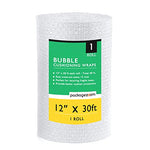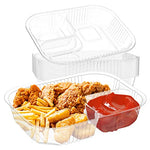You have no items in your shopping cart.
In today's world, where environmental sustainability is a pressing concern, reducing single-use plastics at home has become more critical than ever. From plastic bags to disposable utensils, these items contribute significantly to pollution and harm our planet's ecosystems. Fortunately, there are numerous simple yet effective steps you can take to reduce your reliance on single-use plastics in your household. Let's explore five practical strategies to minimize plastic waste and embrace a more eco-friendly lifestyle.
Simple Steps to Reduce Single-Use Plastics in Your Home
Audit Your Plastic Usage
Take a moment to assess the amount of single-use plastics you currently use in your daily routine. Identify common items such as plastic bags, water bottles, and food packaging. By understanding your consumption patterns, you can pinpoint areas where you can make changes and reduce your plastic footprint.
Plastic Audit: Understanding Your Consumption Performing a thorough audit of your plastic usage is the first step towards reducing single-use plastics in your home. Start by examining your daily habits and identifying items that contribute to plastic waste.
Invest in Reusable Alternatives
One of the simplest yet most impactful ways to reduce single-use plastics is to replace them with reusable alternatives. Invest in high-quality products such as reusable shopping bags, stainless steel water bottles, and glass food containers. These durable alternatives not only help reduce waste but also save you money in the long run.
Switching to Reusables: A Sustainable Solution Transitioning from single-use plastics to reusable alternatives is a sustainable choice that benefits both the environment and your wallet. By investing in durable products, you can significantly reduce your plastic consumption and minimize waste.
Shop Mindfully
When shopping for groceries and household items, opt for products with minimal or recyclable packaging. Choose items packaged in paper, cardboard, or glass instead of plastic whenever possible. Additionally, consider buying in bulk to reduce the amount of packaging waste generated from individual servings.
Mindful Shopping Habits: Making Informed Choices Adopting mindful shopping habits is essential for reducing single-use plastics in your home. By carefully selecting products with eco-friendly packaging, you can minimize waste and support sustainable practices.
Embrace DIY Solutions
Get creative in the kitchen and explore DIY alternatives to common single-use plastic items. For example, make your own cleaning products using simple ingredients like vinegar, baking soda, and essential oils. You can also craft reusable beeswax wraps as an eco-friendly alternative to plastic cling film.
DIY Eco-Friendly Solutions: Crafting with Purpose Embracing do-it-yourself solutions is a fun and rewarding way to reduce single-use plastics in your home. By making your own products, you can control the ingredients and packaging, leading to a more sustainable lifestyle.
Spread Awareness
Share your journey towards reducing single-use plastics with friends, family, and community members. Raise awareness about the environmental impact of plastic pollution and encourage others to join you in adopting eco-friendly practices. By inspiring collective action, you can amplify your efforts and make a meaningful difference in protecting our planet.
Spreading the Message: Advocating for Change Raising awareness about the importance of reducing single-use plastics is crucial for driving positive change. By educating others and fostering a culture of sustainability, we can create a cleaner, healthier environment for future generations.
FAQs
How can I recycle single-use plastics at home? You can recycle single-use plastics at home by segregating them from other waste and following your local recycling guidelines. Look for recycling centers or programs in your area that accept plastic materials for recycling.
Are compostable plastics a better alternative to single-use plastics? While compostable plastics may break down more easily than traditional plastics under certain conditions, they still pose environmental challenges. It's essential to choose durable, reusable alternatives whenever possible to minimize waste generation.
Can I repurpose single-use plastics in creative ways? Yes, you can repurpose single-use plastics in various creative ways to extend their lifespan and reduce waste. For example, you can use plastic bottles as planters, turn plastic bags into durable totes, or transform plastic containers into storage solutions.
What are the environmental consequences of single-use plastics? Single-use plastics have significant environmental consequences, including pollution of waterways, harm to wildlife, and contribution to greenhouse gas emissions. By reducing our reliance on single-use plastics, we can mitigate these impacts and protect the planet.
How can I encourage my family to adopt eco-friendly practices? You can encourage your family to adopt eco-friendly practices by leading by example, discussing the importance of sustainability, and involving them in decision-making processes. Celebrate small victories and make sustainability a shared goal for the entire family.
Where can I find reliable information about reducing single-use plastics? You can find reliable information about reducing single-use plastics from reputable sources such as environmental organizations, government agencies, and scientific research publications. Look for evidence-based guidance and practical tips to guide your efforts.
By implementing these simple steps, you can significantly reduce single-use plastics in your home and contribute to a cleaner, healthier planet. From auditing your plastic usage to spreading awareness in your community, every action you take makes a difference. Together, we can work towards a future where plastic pollution is minimized, and our environment thrives.







![100% Compostable 9 Inch Paper Plates [125-Pack] Heavy-Duty, Natural Disposable Bagasse Plate, Eco-Friendly Made of Sugarcane Fibers - Natural Unbleached Brown 9" Biodegradable Plate by Stack Man](http://www.trashrite.com/cdn/shop/products/418LbW6FSUL_150x150_crop_center.jpg?v=1689802541)
